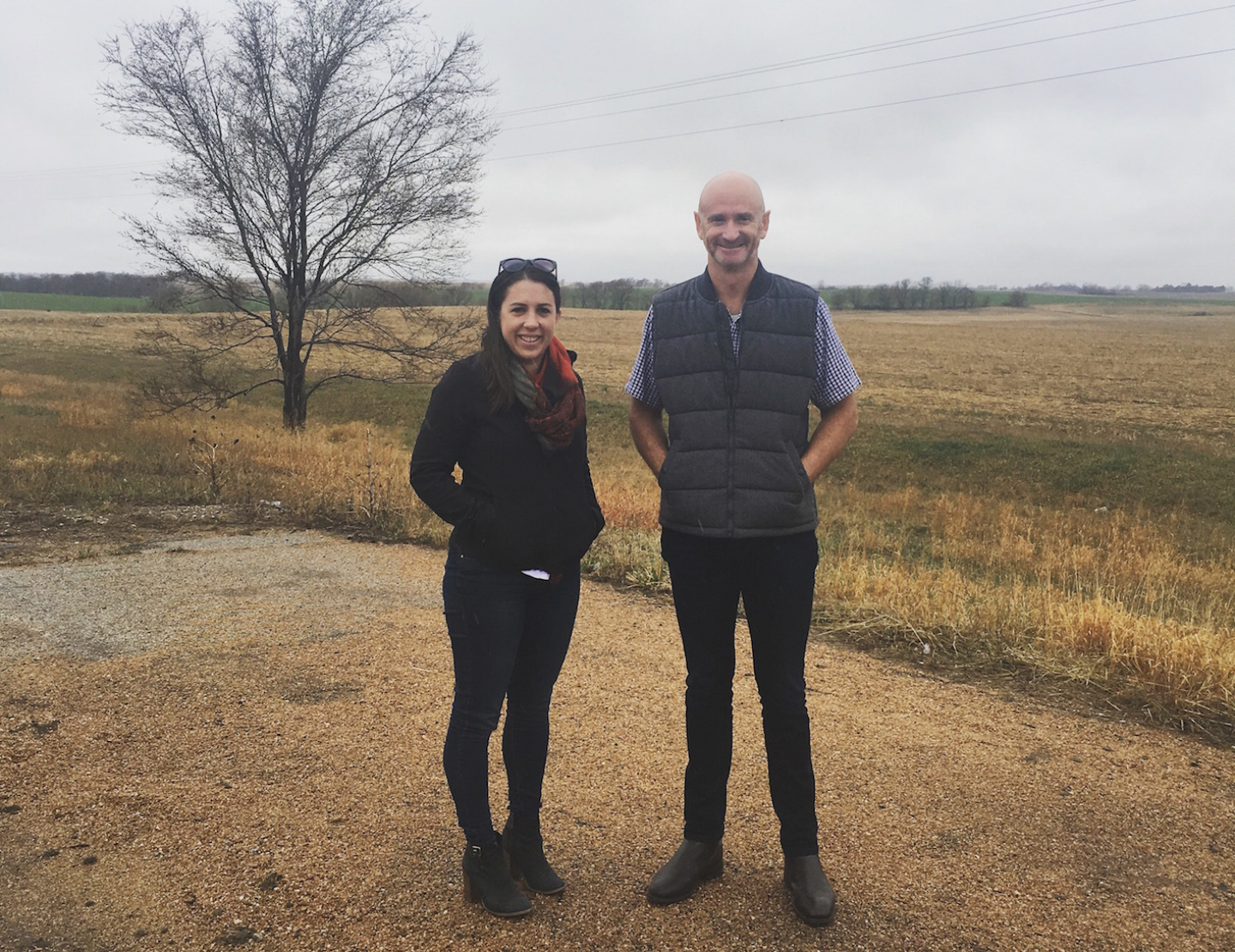By Admin
Head of Rural, Sophie Stanley, and Figured CEO, Paul Reid in Kansas, USA.
By Sophie Stanley
While most people’s view on America may be taken from watching the Kardashians or the latest sound bites from Trump or Hillary in the upcoming US elections, I have been humbled to yet again to go into the heart of America and meet some real Americans, who couldn’t be more different from the media myth.
Yup, that’s right. Figured has been on tour in the heart of America’s agricultural states - the mighty MidWest, and more specifically Omaha, Nebraska, followed up by attendance at the World Agritech Investment Summit in San Francisco.
Our trip to the US was to understand a bit more about the US market. As with any NZ-based company, the reality is that there is only a limited market size in NZ and Australia, purely due to our size and scale. This is particularly true when it comes to farming.
So, what did we learn?
Well, to start, there are similarities. Commodity prices in the corn sector have plummeted this year, which is putting a lot of farmers in pretty tough positions - a situation which is very similar to the dairy market in NZ. The USDA released further reports in the last few days that 6% more corn is being planted in the US this year, increasing from 88 million acres to 93.6 million acres, leading to further price drops in the market.
As we know, a lot of farmers in New Zealand are taking a closer look at their business and cashflow to weather the storm here - and they are looking to their advisors for support around how to do this. However, due to the fragmented nature of the banking system in the US (there aren’t just 7 or 8 banks, there are thousands!), getting efficient technology solutions to automate data flows is just a tad more difficult. When we heard that over 90% of farmers still use physical cheques to pay for bills, we couldn’t believe our ears! In fact, we struggled to think of someone we know down under that still owns a cheque book. It really hit home how lucky we are to have such an advanced banking system and digital platform in New Zealand and Australia, with leading banks like ASB and BNZ recognising the importance of providing industry solutions.
Production vs profit
In the technology sector, $2.36 billion was invested in agri tech in the US in 2014, and that doubled in 2015 to $4.6 billion. However, most interesting was that there has been a big focus from the agricultural industry around building solutions that are focused on increasing production (whether it be crop yields, or milk production etc). A good example of this was listening to some of the heavy hitters in the cropping sector, including Monsanto, at the World Agritech Conference. They discussed examples of farmers producing up to 532 bu/acre vs the national average of 168 bu/acre. We see examples of this in all farming sectors - pushing to increase our production without actually linking it back to the bottom line.
While we don’t know the respective profitability stats in this example, it is conceivable that a farmer producing less corn may have been more profitable. But the key point being, that unless we are linking our production back to our profitability, we won’t know.
Is that extra work worth it? Are we getting a return on our increased investment? Or could we be looking at different options to remain sustainable? These are the questions that we should be asking, particularly more relevant in the tough times. There is a huge missing link, and we believe technology like Figured, with the goal of aligning production with profit, can fill that gap.
And that leads us to the question of ‘how’?
No matter where you are in the world, we are confronted with this idea around data fatigue. There are now many technology solutions that are collecting data for the farmer and farming team, but how do we make them all talk together in a way that makes sense and gives us information that we can actually make decisions and act on - while giving the farmer the choice about what platform they want to consume it from?
If we try to design one data schemer to rule them all, then we will be years away from getting to a solution. Technology companies need to focus on creating good developer documentation, tools, real-time webhooks, well designed API interfaces and lots of rich data. Without getting too much into the jargon of it all, there are really great solutions that can pull this all together which makes sense to the end user, and at Figured we are pretty focused on getting that right.
But at the crux of it all are partnerships and relationships.
Technology can provide data and information, but it can’t provide insights. When technology solutions are partnered with our farmers’ trusted advisors to provide those insights, that is the nirvana for us, as it brings the farming team together, and there are better outcomes all round.
And no matter where you go in the world, building relationships based on that trust and integrity is crucial for any businesses success. It’s not about buying products, it’s about finding solutions that help businesses succeed.

